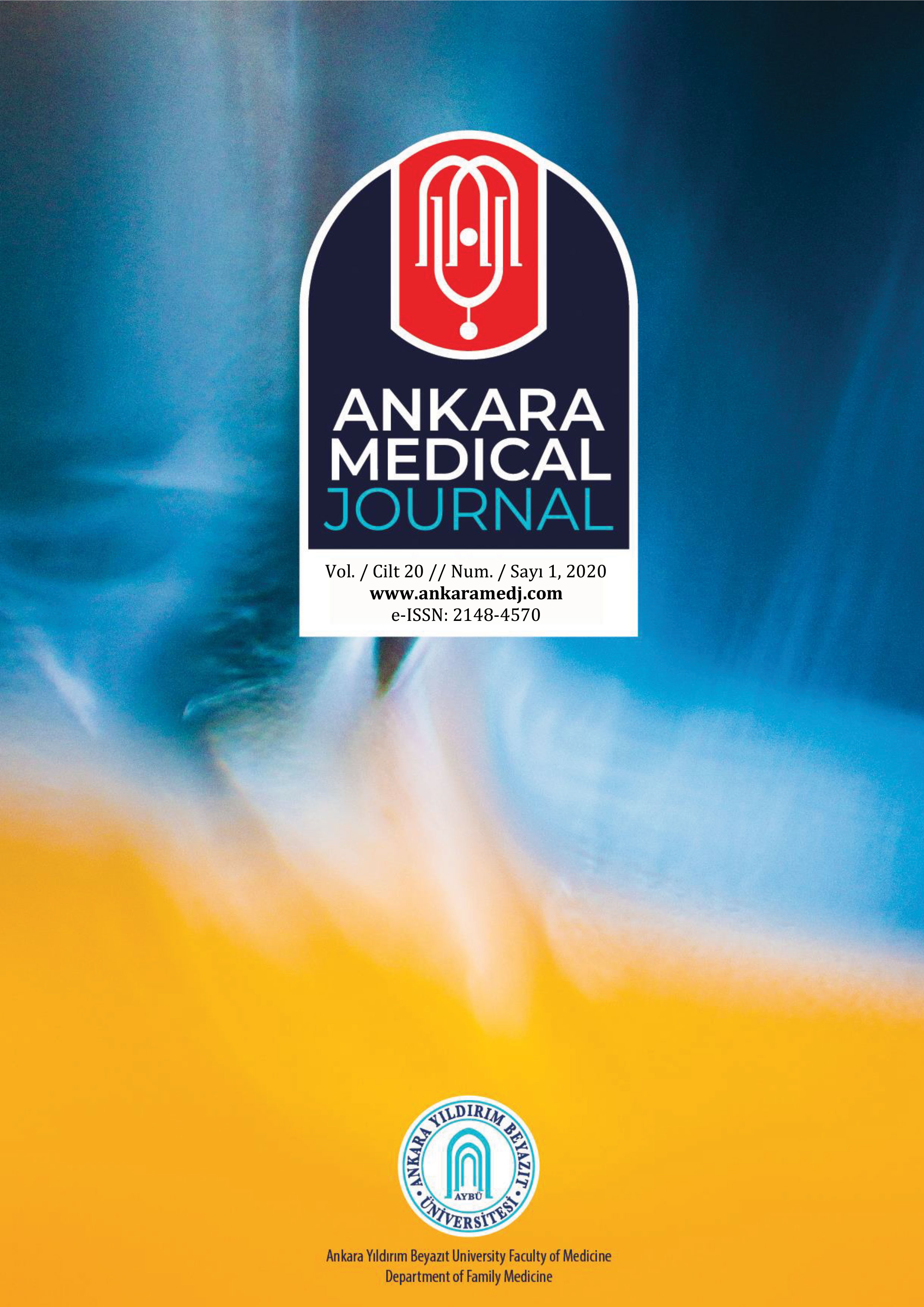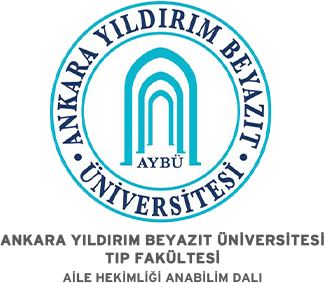Ocupational asthma and rhinitis among health care workers in tertiary health care centers
Adile Berna Dursun1, Funda Aksu2, Hülya Bayiz3, Kurtuluş Aksu21Recep Tayyip Erdogan University School of Medicine, Internal Medicine Department, Rize2Ankara Atatürk Chest Diseases and Chest Surgery Training and Research Hospital, Chest Diseases Department, Ankara
3Bahçeşehir University Faculty of Medicine, Chest Diseases Department, İstanbul
INTRODUCTION: The first diagnostic tool for the diagnosis of occupational asthma and rhinitis is clinical history, which inquires about the nature of symptoms and their relationship to work and specific occupational exposures. The present study aims to search for the presence of symptoms related to occupational asthma and/or rhinitis among health care workers.
METHODS: With an open questionnaire health-care workers employed in bacteriology, biochemistry/hematology, pathology and dental laboratories in tertiary health-care centers were questioned about the presence of symptoms regarding occupational asthma and rhinitis as well as the relationship of their symptoms with the workplace.
RESULTS: Of 230 subjects (165 females, 65 males) mean age was 34.39 ± 0.51 and they were exposed at work for a mean duration of 10.13±0.49 years. Work-related symptoms were positive in 172 (%74.78) subjects for about 4.92±0.42 years. All subjects employed in the pathology department and most of the ones (92.19%) in dental hospital and more than half of employees of bacteriology (72.92%), biochemistry/hematology laboratories (50.63%) were symptomatic. The most commonly reported symptoms by participants were nasal and ocular whereas other symptoms were found to be respiratory, constitutional and dermatological. 54.65% of the subjects were able to identify a specific agent related to their symptoms. Of the patients 88.37% stated that their symptoms were worse on the days when they came to work; 50.58% that their symptoms were intensified progressively throughout the week; 20.93% and 8.14% stated that they continued to be symptomatic during the weekend and long term holidays, respectively. Although being aware of the symptoms only %55.81 of the subject were willing to be tested in the clinic.
DISCUSSION AND CONCLUSION: The majority of the health-care workers working in tertiary centers have work-related symptoms involving one or more systems. However, most of them ignore their symptoms and are not willing to be evaluated for occupational asthma and/or rhinitis. Health-care workers should be informed about occupational health and their workplace conditions should be improved.
Üçüncü basamak sağlık çalışanlarında mesleksel rinit ve astım sorgulaması
Adile Berna Dursun1, Funda Aksu2, Hülya Bayiz3, Kurtuluş Aksu21Recep Tayyip Erdoğan Üniversitesi Tıp Fakültesi, İç Hastalıkları Anabilim Dalı, Rize2Ankara Atatürk Göğüs Hastalıkları ve Göğüs Cerrahisi Eğitim ve Araştırma Hastanesi, Göğüs Hastalıkları Kliniği, Ankara
3Bahçeşehir Üniversitesi Tıp Fakültesi, Göğüs Hastalıkları Anabilim Dalı, İstanbul
GİRİŞ ve AMAÇ: Mesleksel astım ve rinit tanısında ilk basamak semptomların doğası ve işyeri ile ilişkisi ve özel mesleksel maruziyetlerin sorgulandığı ayrıntılı öyküdür. Çalışmanın amacı sağlık çalışanlarında meslek astımı ve/veya meslek rinit ile ilişkili semptomların sıklığının araştırılmasıdır.
YÖNTEM ve GEREÇLER: Üçüncü basamak sağlık hizmeti veren merkezlerde bakteriyoloji, biyokimya/hematoloji ve patoloji laboratuvarları ile ağız ve diş sağlığı merkezi çalışanlarına açık uçlu anket yöntemi ile mesleki astım ve rinit ile ilişkili şikayetleri ve şikayetlerin işyeri ile ilişkisi sorgulandı.
BULGULAR: Değerlendirilen toplam 230 olgunun (165 kadın ve 65 erkek) ortalama yaşı 34,39 ± 0,51, ortalama çalışma süresi 10,13 ± 0,49 yıldı. İşyeri ile ilişkili semptom tanımlayan olgu sayısı 172 (%74,78) olarak bulundu; bu kişiler ortalama 4,92 ± 0,42 yıldır işyerinde semptomlarının olduğunu belirtti. Patoloji bölümünde çalışanların tümünde, ağız ve diş sağlığı çalışanlarının büyük çoğunluğunda (%92,19), bakteriyoloji (%72,92), biyokimya/hematoloji laboratuvarı (%50,63) çalışanlarının ise yarıdan çoğunda semptom vardı. Sorgulanan semptomlar içinde en sık nazal ve oküler yakınmalar iken diğer yakınmalar solunumsal, konstitüsyonel ve dermatolojikti. Semptomların belirli maddeyle ilişkisi olduğunu %54,65 olgu tarifleyebiliyordu. Olguların %88,37si semptomlarının işe geldiği günlerde daha kötü olduğunu; %50,58i hafta sonuna doğru şiddetlendiğini; %20,93ü hafta sonu tatilinde ve %8,14ü uzun süreli tatillerde devam ettiğini belirtti. Semptom varlığına rağmen ileri tetkik yapılmasını olguların sadece %55,81i kabul edebileceğini bildirdi.
TARTIŞMA ve SONUÇ: Üçüncü basamak sağlık hizmeti veren merkezlerde çalışanların büyük bölümünde işyeri ortamı ile ilişkili birden fazla sistemi ilgilendiren semptomların varlığı görüldü. Buna karşın bireylerin bu konuyu yeterince önemsemedikleri ve ileri araştırma istemedikleri görüldü. Sağlık çalışanlarının da işyeri sağlığı konusunda bilgilendirilmeleri ve uygun işyeri şartlarının sağlanması gereklidir.
Corresponding Author: Kurtuluş Aksu, Türkiye
Manuscript Language: Turkish
(713 downloaded)





